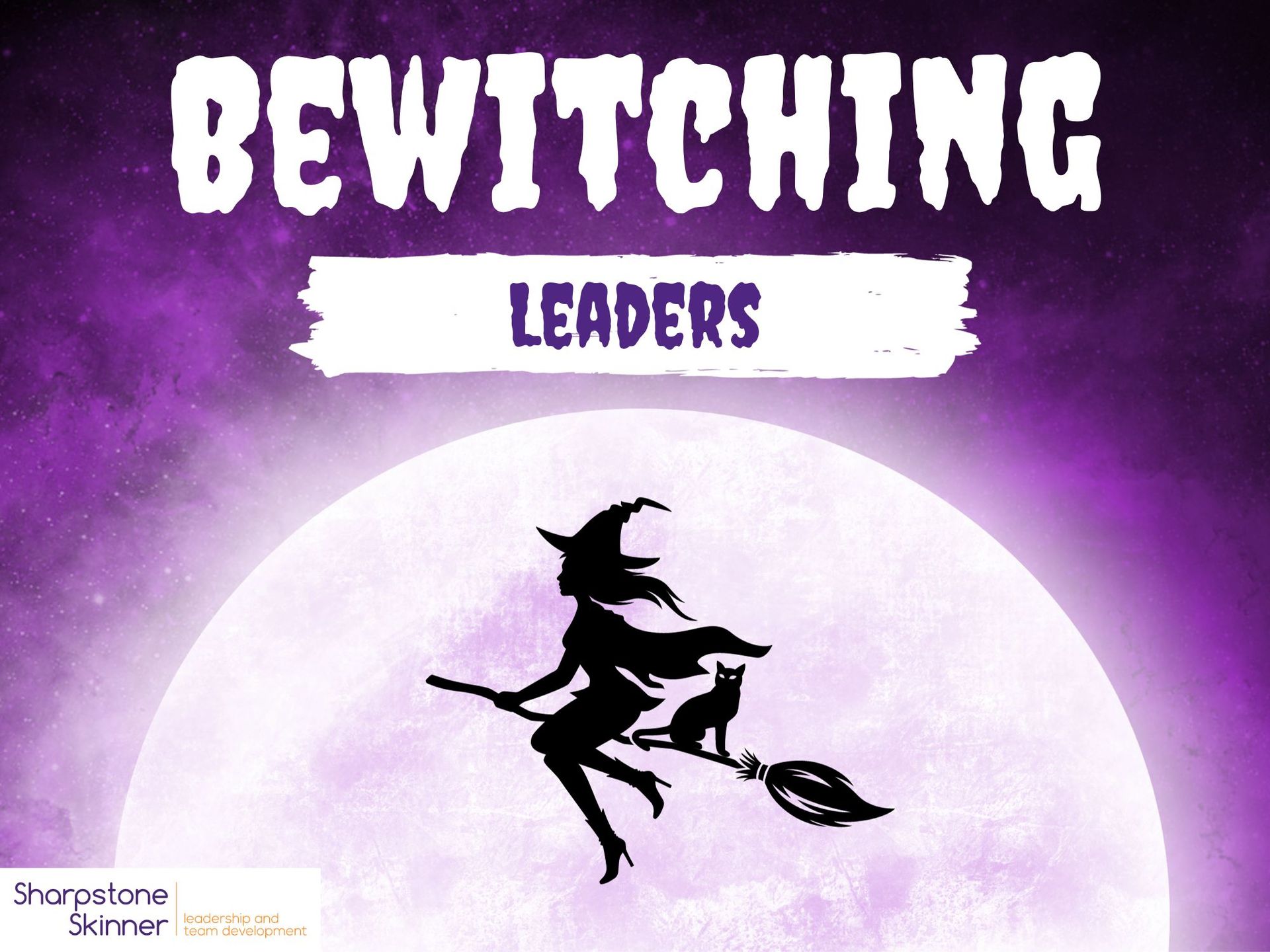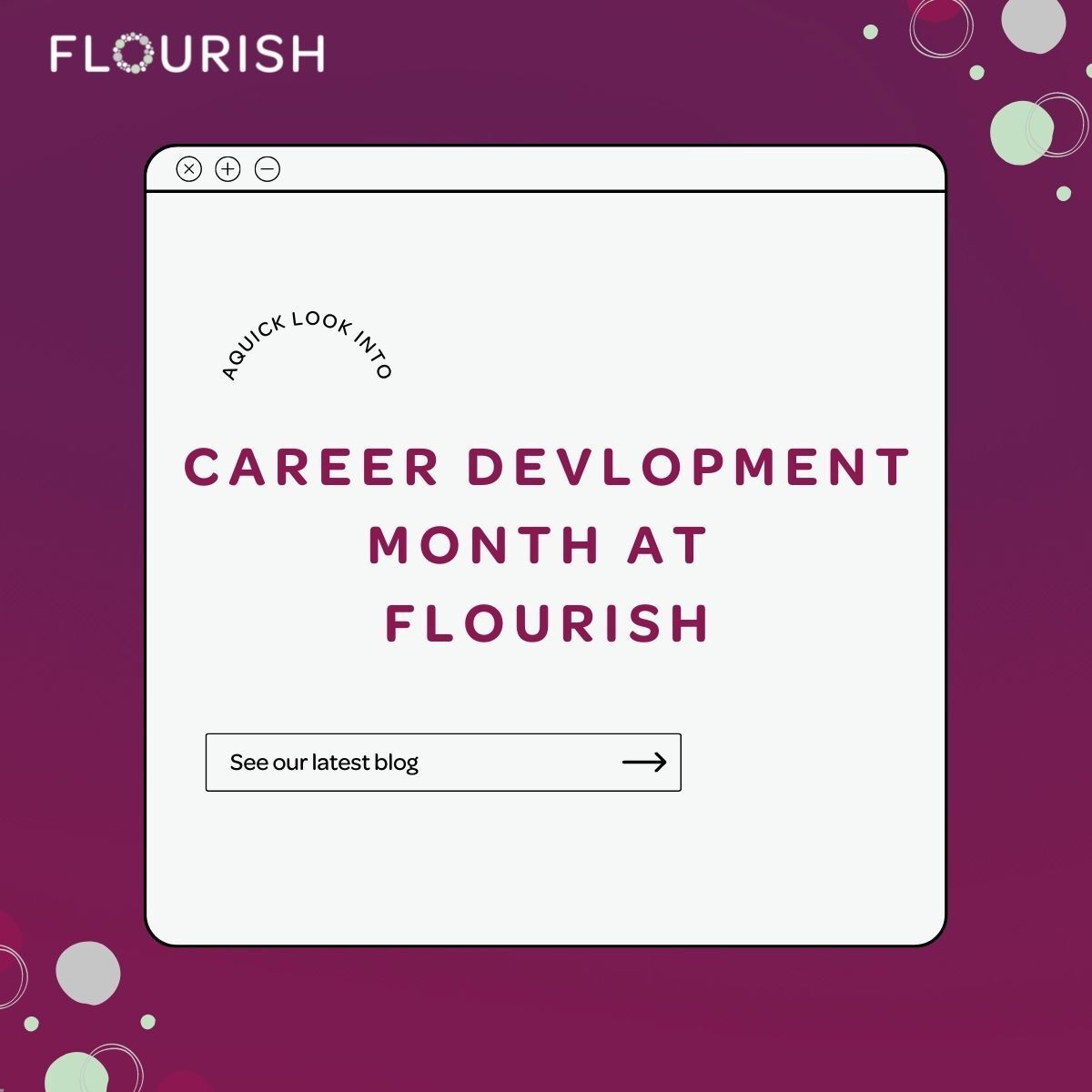
Guest article by Christina Mancini from Mancini Public Relations
In today’s world of public relations, where the landscape has transformed and often changes on a dime, it can be challenging for organizations to effectively measure the impact of PR strategies. Trends can be difficult to predict and breaking through the “noise” seems to be a near-impossible task.
Increasing use of data analytics may help paint a truer picture of performance and impact, while helping leaders with decision making and forward-looking strategies.
So, what is data analytics as it relates to PR? A textbook definition is the systematic analysis of information to measure, track, and interpret the effectiveness of PR campaigns, messaging, and overall brand perception. It involves gathering and analyzing various data points—ranging from media mentions, social media engagement, website traffic, and audience sentiment, among others—to derive actionable insights. But, what value does data analysis really provide?
1. Quantifiable Measurement:
Data analytics enables PR professionals to measure the impact of their efforts with precision . Metrics such as reach, impressions, engagement rates, and conversion rates provide tangible evidence of campaign success or areas needing improvement.
2. Insightful Audience Analysis:
Data analytics tools allow PR teams to delve into audience behavior, preferences, and demographics. By understanding the audience better, PR strategies can be tailored to resonate more effectively , ensuring messaging reaches the right people at the right time through the right channels.
3. Real-Time Monitoring and Adjustment:
Data analytics provides real-time monitoring of PR campaigns, allowing professionals to adapt strategies promptly based on ongoing insights, as well as enabling agility in managing crises, addressing negative sentiment swiftly, and capitalizing on positive interactions.
The "Right Fit"
While there is no shortage of data analytics tools and resources available, finding the right fit for your organization is important. Think about the end results first. What questions are you hoping to answer for your organization? Consider what types of data your organization will find valuable, who will be reviewing and using the data and for what purpose (there may be training involved), and what platform will present the results in a manner that is meaningful and easy to understand. In addition, cost can be a significant factor. Find a platform that will offer what you need – with the ability to upgrade or make enhancements, if necessary.
In short, the use of data analysis is becoming a crucial cog in an organization’s public relations wheel. Just like the usefulness of the traditional sales funnel, data analysis helps add another layer to calculating return on investment. Data analytics provides the means to assess the value generated from PR initiatives which also helps justify PR expenditures, refine future strategies, and guide strategic decisions, with the goal of ultimately improving an organization’s bottom line.
For assistance connecting with your audiences, creating trust, and navigating the complex landscape of public perception, consider reaching out to PR professionals who specialize in your industry. Mancini PR, for example, specializes in helping nonprofits achieve PR and fundraising excellence. Even if we’re not the right fit for your business, we may be able to help you find the perfect PR partner.

‘AI’ was named as Collins Dictionary’s word of the year for 2023, and we can’t argue with that! It has certainly been a buzzword and one that we have been hearing across our industry, but there are questions that surround it as people scramble to understand AI, its applications, and unlock its full potential. One question we’ve repeatedly heard is, how can AI be used to streamline the social media content creation process?

Halloween is a slightly strange time of year when you stop and think about it. It is the one day each year where we (in the UK at least) celebrate ghosts, ghouls, witches and other generally spooky stuff. It wasn’t always quite so commercial. Like most festivals, the history of Halloween links back to the Christian religion and specifically the eve of the feast of All Saints Day, with the less common name for Halloween being All Saints’ Eve and the celebration was a remembrance of the dead, including martyrs and saints (hallows).
Commercialisation has morphed Halloween into an orange pumpkin carving, trick-or-treating, witch cackling, “big scare” version of what it is really all about.
The murky world of cybersecurity and hacking is also very similar, at least in terms of public perception. If I ask you to think of a hacker and draw me a picture, I would put money on you drawing a shadowy figure in a hoody. You might use the now infamous Guy Fawkes mask made famous to the general public by the Anonymous hacking consortium – although it was actually designed and first used in the V for Vendetta comic series in the 1980s.
Really though, whilst I’m sure some of them own hoodies, hackers aren’t typically shadowy hooded people sitting in dark rooms. The most prolific and globally troubling hackers are nation state collectives. These are teams of professionally trained cyber warriors who act on behalf of a country or government to commit cyber crime that furthers the aims of that country.
It’s not just the countries that we in the West would commonly jump towards that are hacking on a state level, every major country has teams of people both hacking and defending – probing systems for weaknesses and trying to catch those probing their own. Something like a cyber cold war, although more luke to medium warm than cold as these teams can and will attack without there being traditional conflict or warfare playing out in the public eye.
To give you some idea of the sort of things that happen, who carries them out, and who is targeted or affected, let’s take a look at a couple of high-profile nation state hacks; One from the West, and one from the East.
Starting with the West, the attack that jumps front of mind for me was a virus called Stuxnet. Although never officially confirmed, Stuxnet is widely believed to have been developed by the United States and Israel in a joint operation known as “Operation Olympic Games”. The worm was designed to spread quickly around computer networks once it was introduced to a system on that network. Its target was very specific: Siemens SCADA systems. Now unless you are into industrial control systems, that will mean nothing to you, but SCADA systems are used to control industrial processes and specifically in this instance the control of centrifuges used to enrich Uranium for atomic weaponry creation. The worm was believed to have been delivered via compromised USB sticks, which were clearly picked up and plugged into at least one computer within the Iranian nuclear program as it successfully caused around one-fifth of their nuclear centrifuges to spin so fast they spun themselves apart. Clever stuff!
Now to head East and to talk about the Lazarus Group. This is a hacking collective that work on behalf of North Korea to attack state enemies and find ways to steal money for the North Korean economy which is heavily sanctioned worldwide in general trade terms.
The Lazarus Group were responsible for the hack of Sony Pictures in 2014 which according to Sony cost them $15 million. Other sources say the damage was more likely to have been $35m – $85m, but the reputational damage was huge.
The Lazarus Group infiltrated Sony via phishing e-mails, which encouraged staff at the company to open an attachment which then installed malware to allow them access to the systems.
They stole and published internal data, private e-mails, films, PlayStation content and much more. Why? As an act of revenge against Sony who were planning to publish a film called “The Interview” which portrayed North Korea and its leaders in a bad light.
They also successfully pulled off a number of further high-profile hacks including a hack of Bangladesh Bank to attempt to steal $1 billion – getting away with $101 million before being locked out of the systems.
So how does this impact you, your business, and your cyber security? After all, you’re not expecting to be hacked by North Korea, are you?
Well actually, the key thing here is the lessons we can all learn in terms of cyber hygiene and good practice. All of the attacks above were essentially able to happen due to people – staff – doing something that wasn’t sensible: plugging in an unknown USB device, opening a phishing e-mail, installing unknown software.
By training all of our staff on the basics of good cybersecurity, we can all improve our security posture and ensure that we don’t get subjected to a data breach or hack.
Free cyber security training can be found on the National Cyber Security Centre website here:
https://www.ncsc.gov.uk/blog-post/ncsc-cyber-security-training-for-staff-now-available
More advanced cyber security training and testing can be arranged by numerous companies. A good starting point would be to speak to your IT service provider.
Stay safe, don’t get spooked, and Happy Halloween!
Craig Atkins runs 1-Fix Limited, an IT Support and Cyber Security consultancy in Readingspecialising in helping small businesses with all of their technology challenges, from helpdesk support, procurement, cloud, and – of course – cyber security.
Craig can also be found on LinkedIn - https://www.linkedin.com/in/craigatkins1fix/

In the current digital era, big data has become an important and valuable resource for individuals, organisations and governments. It refers to the massive volume of data collected from various sources, including: social media, online transactions, sensors etc. Although big data holds immense potential for innovation and insights, it also raises huge issues related to privacy.
How is Big Data Collected and Used?
With the rise of social media and eCommerce, the total volume of data generated was 64.2 zettabytes in 2020 ; it’s predicted to reach 181 zettabytes by 2025. A large part of this data consists of consumer data, and there are three types of this data:
First Party Data: data collected directly from users by organisations.
Second Party Data: data shared by another organisation about its customers.
Third-Party Data: data that’s been aggregated and rented or sold by organisations that don’t have a connection to your company/users.
The collection and usage of big data are done through various means:
Social Media Activity: social network users, on average, spend 2-3 hours daily. This is considered to be the main supply of unstructured data in the form of video, audio, photo, texts etc. Therefore, big data tools are required to process the content shared on social media as well as gather data on user activity. This will allow companies to identify social media trends and gain insights, which can be used to make engagement decisions such as which users to target with campaigns.
Analytics: Big data and online marketing analytics are very much intertwined, with big data providing the raw material and online marketing analytics techniques extracting insights and enabling data driven decision making in marketing strategies. The biggest eCommerce companies, such as Amazon and eBay serve millions of customers on a daily basis and generate vast amounts of data as a by-product. Thus, these companies can tailor content, offers and recommendations on websites, emails, and other marketing channels to provide a more relevant and engaging experience. This process is adopted by Spotify, which generates song and playlist recommendations based on user listening habits. Furthermore, the medical sector analyses large datasets of clinical data and other relevant info; hence it emphasises how big data is helping healthcare providers to identify targeted treatments for patients with complex medical conditions.
Loyalty Programs and Codes: This is a popular way amongst retailers to build loyalty and collect vast amounts of valuable data, giving companies the scope to create buyer profiles through the analysis of this data.
From healthcare to finance, all the way to retail, big data has transformed how industries function and has been used in the following ways:
Personalised Recommendations: retailers use big data collected by consumers, such as: customer data, browsing history, purchase behaviour etc., to personalise their shopping experience. As a result, it allows retailers to include personalised recommendations and targeted promotions to ensure a more tailor made consumer experience.
Analytics: businesses from different sectors analyse vast amounts of data to inform their decision making. For example, healthcare organisations analyse large volumes of data to gain valuable business insights into population health patterns, disease prevalence and treatment efficiency. Furthermore, retailers leverage big data to analyse market trends, customer preferences and competition data to gain insights into consumer demand and make informed decisions. Additionally, media companies may analyse data on user behaviour and content consumption patterns can predict the box office performance of upcoming movies and make investment decisions on new TV shows.
Fraud Detection: many industries use big data analytics to detect and prevent fraud. For instance, banking institutions can analyse historical data, transaction history and behaviour patterns to take proactive measures to prevent and mitigate risks in the future.
Privacy Risks Associated with Big Data
However, with big data comes an inevitable threat to data security and privacy issues.
Privacy Breaches: With the rise of personalised marketing and the collection of vast amounts of data from companies, it becomes harder to store and increases the likelihood of data breaches. This leads to leaks of important personal info.
Surveillance: big data analytics enable extensive monitoring and surveillance capabilities which leads to concerns about mass surveillance and potential abuse of power.
3rd Party Data Sharing: Big data often involves the sharing of data with 3rd parties such as advertisers, marketers or data brokers. This may occur without individuals' knowledge/consent and leads to a loss of control over personal info.
How to Mitigate Privacy Risks
Addressing these privacy issues requires a multifaceted approach that involves legislation, industry practices and individual awareness. Here are the methods that each key stakeholder can implement to minimise privacy risks:
Governments: governments can encourage organisations to adopt “Privacy by Design” principles. Here, organisations are required to integrate privacy considerations into the design and development of systems and processes from the outset. This includes: incorporating privacy controls, anonymising data and implementing strong security measures. Also, governments can work together to establish international frameworks to facilitate cross border data protection.
Organisations: implementing more robust data security measures will ensure that organisations better safeguard personal data from unauthorised access; this could involve encryption and regular security audits. Furthermore, organisations should stay updated on the best practices for data protection and respond promptly to emerging data threats.
Individuals: individuals should look to read and understand the privacy policies of the platforms that they use and evaluate whether it’s safe to continue sharing their data. In addition, individuals should regularly review and adjust privacy settings on social media platforms and evaluate whether the requested access to their data is necessary for the app’s functionality.
In today’s digital era, the emergence of big data has brought tremendous opportunities for innovation and progress. However, it raises significant concerns regarding privacy. As organisations and governments harness the power of big data to drive decision making, it becomes increasingly important to address the issues surrounding privacy. Hence, a speaker who is proficient in the world of big data can help your organisation to better understand the complexities surrounding it.

Guest article by Helena Sharpstone from Sharpstone Skinner .
In today's people-powered world, some professionals stand out from the crowd. While you may not know their skills or experience, they exude an in-demand vibe that attracts opportunities. What's their secret? Actually, these high performers share three key traits: a growth mindset, an inclusive approach, and resilience.
Cultivating a Growth Mindset
High performers develop a growth mindset by continually looking for ways to add value. They identify and maximise their natural strengths, whether that's listening, problem-solving, generating ideas, or more. Additionally, growth-minded professionals work to improve in other areas too. They come to teams ready to contribute rather than just take. While a "can-do" attitude can sound cliché, finding ways to say "yes" more often boosts your in-demand status.
To cultivate a high-performance mindset, take time to reflect on your natural abilities and how you can best leverage them. What value do you naturally add to teams? Are you an empathetic listener who helps others feel heard? A big picture thinker who excels at strategic planning? Or someone with a gift for bringing out the best in people? Maximising these innate strengths is key.
Also examine opportunities to stretch and grow. Can you, for example, become more detail-oriented if you tend to think big picture? Can you improve your written communication skills if public speaking is more natural? Broadening your skill set expands the ways you can contribute. Don't be afraid to ask trusted colleagues for development areas to focus on.
Embracing an Inclusive Approach
In-demand professionals know that diversity powers innovation. Rather than only seek out similar colleagues, they welcome different perspectives, experiences, and backgrounds. Although it may feel more comfortable to surround yourself with people like you, resisting ‘groupthink’ keeps teams fresh. Leveraging different viewpoints sparks new ideas and stronger solutions. An inclusive approach also allows you to fluidly navigate across teams and organisations.
Try to connect with colleagues who have a different background to you. Have lunch with someone from a different department or someone much earlier or later in their career. Seek diverse perspectives when problem solving. Expose yourself to ideas outside your normal circles. This cross-pollination acts as a fertiliser to creative thinking.
Building Resilience
Today's ever-changing environment requires resilience. To strengthen your backbone, read about growth mindset pioneer Carol Dweck. Her research shows that success stems from hard work more than innate talent. She encourages a "not yet" mentality, recognising that you haven't achieved something yet versus writing yourself off after failure. Coaching yourself to think "not yet”, but “getting there" fuels persistence. Teams value this hopeful, effort-focused approach.When you encounter setbacks, avoid labelling yourself a failure. View them as feedback to guide your growth. Setbacks often provide pivotal information on how to improve. Reframe the voice saying "I can't do this" to "I can't do this yet." Apply strategies like breaking large goals into smaller milestones to build your capabilities. Eventually, the very skill that once challenged you will become a strength.
In summary, developing an in-demand mindset requires cultivating growth, embracing inclusion, and building resilience. With these three traits, you can stand out and attract exciting opportunities. High performers recognise that continuous development, diverse connections, and persistence pave the path for success. Follow their lead and watch your in-demand status take off.

In the fast-paced world of PR, staying ahead of the curve is crucial for
success. A vital aspect that savvy PR professionals should not overlook is
aligning with the rhythm of seasonal changes. As we transition into the summer
season, our focus surprisingly, but strategically, turns to Christmas – the
golden period of opportunity for our consumer clients.
The Advantage of Early Pitching
While it may seem counterintuitive to consider Christmas in the middle of the year, it's the ideal time for PR professionals to gain a competitive edge. Initiating early pitching for Christmas-themed publications can be a pivotal move, propelling your brand’s visibility and boosting future sales. Securing editorial space in Christmas publications is a challenge due to the high demand; hence, being proactive pays off.
Maximizing Your Brand Exposure
Being one step ahead and utilising the 'Christmas in July' strategy opens doors to an array of opportunities. With numerous publications and media outlets initiating their Christmas content planning well in advance, seizing this opportunity allows you to pitch your ideas early. This strategic move enhances your chances of securing prime editorial space, maximizing your brand's exposure during the lucrative holiday season.
Nurturing Journalist Relationships
Furthermore, this forward-thinking approach can foster better relationships with key journalists. Building these relationships requires time, effort, and a strategic approach. Engaging with journalists early ensures thoughtful and effective communication, increasing the chances of successful collaborations and gaining favourable media coverage.
Missing Deadlines isn’t the End
Even if you miss deadlines for certain publications, all is not lost. Long lead national publications may have their Christmas content in place, but regional monthlies, weeklies, national newspapers, and supplements are still scouting for captivating Christmas content. Online publications and blogs, with their flexible publishing schedules, also offer excellent avenues for getting your content out there.
Early Festive Planning Across Sectors
Regardless of your industry – be it retail, hospitality, food and beverage, or another sector, adopting the 'Christmas in July' strategy can spark interest and engagement, garnering valuable media coverage during the Christmas season.
If you are a consumer brand who is looking to kick start their Christmas campaign, don’t hesitate to get in contact at hello@flourishpr.co.uk and see how we can help grow your business.

With Elon Musk’s $44 million acquisition of Twitter causing quite the stir, many platforms have tried to capitalise on the fleeing crowds from the platform. Companies such as Bluesky and Mastodon have all tried to become the new Twitter and, while they showed early signs of competition, they couldn’t handle the sheer power and size of Twitter. However, there’s a new kid on the block with a huge amount of force behind them.
Threads was released on Thursday and had an instant impact. 10 million users in the first day, #Threads was number one trending on Twitter, its name was plastered all over the news and it even had some big celebrities and businesses making the jump such as Shakira, Gordon Ramsey and Netflix. As well as all the controversy around Twitter, another reason that could be attributed to these outcomes could very easily be the ease of the sign-up process. As Threads is part of the Meta ecosystem, and is connected to Instagram, it automatically detects your Instagram account and migrates your information over. It has also deemed itself as a brand-safe environment for advertisers.
So, what’s the catch? Well, Meta have always had a bit of an issue with how they handle user data, and it is fair to say that Threads certainly collects more than enough data from its users. You can find out what data an app will collect from you by visiting the specific app page on the Apple App Store. If I were to add screenshots in this blog of the list of data that Threads collects, it would be 10 images long, and all of this data is used in a closed source algorithm. Although Twitter is no saint either, it certainly doesn’t collect anywhere near as much data as Threads, according to the Apple App Store. Furthermore, Meta has a track record of following suit when it comes to new features, which often don’t quite live-up to the original. The two main examples of this are Stories, inspired by Snapchat, and Reels, inspired by TikTok. With the addition of Threads, Meta has now completed the trifecta by creating an alternative to Twitter, so is it third time’s the charm? Obviously, Elon Musk, owner of Twitter, hasn’t taken it too lightly and has opened court proceedings with Meta accusing them of stealing Twitter’s IP by hiring ex-Twitter employees who still have access to Twitter’s trade secrets and confidential information. However, as of right now, it is unclear as to how far this could go.
The overarching question remains - should you and your business sign up to Threads? Although the jury is still out on whether Threads will surpass Twitter, it is beneficial to sign up to this new platform so that you can reap the benefits of becoming an early adopter. You will also be able to closely follow the platforms journey to see how it evolves to potentially benefit you and your business. Plus, it will create a new audience segment, with a blend of Meta ecosystem users and Twitter defectors, which could be a perfect audience for your business to target. With its link to Instagram making Threads quick and easy to set up, what’s holding you back?

Have
you ever thought about a career in PR, marketing or brand communications and
wondered how to get started? Like many
careers, there’s no one ‘right way’ in.
November is Careers Development Month which has been actively promoted by the National Career Development Association since 1967. It provides a time for everyone, no matter what stage, to take a look at their future careers. Students, just starting out, may start doing research, going to career fairs, speaking to experts to get an understanding of the type of industry they would like to be involved in. At the other end, employees may look to progress further in their career, such as getting a promotion or changing profession entirely.
The Flourish team comprises of people from a variety of backgrounds, and we’ve handpicked three of our most recent joiners to share their career development stories.
Ellie’s Career Development
As a child, my career ambitions were for the most part centred around my hobbies. First off, I wanted to be a ballerina, then it was a professional show jumper and finally a star on the stage at the West-End (I’m pretty sure seeing Wicked had a fair amount to do with that one…). However, as I grew up, these dreams shifted, and I started to consider where my strengths lay. Having developed a love for modern languages during both my GCSEs and A Levels, I decided to do a degree in French and Spanish at Durham University. The degree allowed me to study a wide range of subjects and meant I got to spend my third year living and working abroad.
While living in Barcelona, I got a job working for a PR and Communications firm having already completed an internship with Flourish the year before. I loved working with clients on exciting campaigns and further developing my abilities writing press releases and leading on accounts. Once I returned to the UK, I finished my degree and started working at Flourish full-time! As a communicative person, I love building relationships with clients and getting stuck into the news agenda. I am excited to keep building on my skills and see where my career in PR takes me.
Rhys’ Career Development – A Different Route
Currently, I work as a Digital Marketing Account Executive at Flourish PR, but this wasn’t always the plan. When I was a lot younger, I had many outlandish ambitions for my career, from being a premier league footballer for Chelsea to being a racing driver and even a presenter on Top Gear. However, I quickly had to reel myself in considering I had nowhere near the required technical ability to do any of these roles.
There was a long period in my life through secondary school where I had no idea what it was that I wanted to do, it was only whilst I was at Sixth Form that I made it a priority to figure this out. My three favourite subjects at school were business, geography and computing (which were the three subjects I did for my A-Levels) and I wanted to find something that combined these three subjects. The standout candidate for this was digital marketing as you need to be business-minded in many aspects of the role as you are the focal point for lead generation in the business; you also need to have a good geographical knowledge in understanding cultures of different countries and regions in the UK so that you can maximise the performance of campaigns; finally, the “digital” in digital marketing directly correlates to computing. I started my digital marketing career freelancing at the age of 16/17, making it my first ever job and the one I am still doing today.
The reason for the transition from freelancing to apprenticeship was basically because I knew I had so much more to learn about digital marketing, and an apprenticeship was the most viable option for me. I’ve often been asked why I chose an apprenticeship over university but I have never been an advocate of university, you can find out why here: https://www.flourishpr.co.uk/apprenticeship-or-university. Now I have completed my apprenticeship, I am onto my next phase of my career which involves further deepening my knowledge, understanding and experience of my chosen path at Flourish.
Hannah’s Career Development – Early Stages
This stage of my career consists of studying History at university and working for Flourish as a PR and Social Media Assistant, part-time. When I was younger, I wanted to be a family lawyer, however, when I realised how much reading I had to do, I diverted from the idea. For a long time, I was unsure of what I wanted to do, I just knew I loved History, so after A-Levels, I decided to study it further university.
In the summer of 2020, I was lucky enough to be a summer intern at Flourish, it was the beginning of my experience in PR. However, my summer experience at Flourish didn’t end completely; I was invited to come back and work part-time while I underwent my studies at university. I am thoroughly enjoying learning about the world of PR and social media too. PR allows for me to be a chatterbox, super organised and experience different writing skills which I love. Although for me, it is only the beginning of my career and I am still in education, from being given the opportunity to work at Flourish, I now have a clear direction of where I am heading.

Hello, I’m Ellie and I’m a new PR & Social Media Account
Executive at Flourish
PR .
New title, new job – but really this is my third time being part of the team.
Back in 2020 I wrote my first blog on my two very different internships ( read more about that here) but, now, here I am as a full-time member of the Flourish family and, honestly, it feels like I have never been away.
Before I tell you what I am doing now – in our busy new office in Marlow High Street – here’s a quick catch up on what I’ve been doing over the past two years. It’s a bit of a travelogue that takes in Durham, Paris and Barcelona.
Durham was where I was based at university completing my undergraduate degree in French and Spanish.
Part of the course required a year out from college perfecting my linguistic skills abroad with the locals. I could have chosen another cosy campus, but I wanted to gain a more real-world experience in the workplace.
First stop by Eurostar was to Paris and the chic and glossy offices of a top international law firm Simmons & Simmons LLP in the historic 1st arrondissement. By day I was preparing legal documents, receiving clients as front of house and directing them to their meetings, all dressed in the finest faux-Chanel suit Zara had to offer. Oh, and I also did the post.
What was great was how the associates involved me in their work, taking the time to explain the significance of the files I was preparing and how they pertained to the case.
By night, I embraced life as a Parisian enjoying the art, music and food of the city. To escape the oppressive summer heat, I even managed a trip down to the Riviera to discover it was, in fact, even hotter.
It was all going so well until Covid struck the French capital – I was laid low for 10 days - and the entire office was forced to shut down. With everyone working from home I had to return to the UK.
Plans for my second stint abroad become more complicated with further Covid lockdowns, travel bans, flight restrictions to Spain and, oh yes, new Brexit passport rules! Undaunted good old Eurostar got me back to Paris and before long I was in Barcelona.
Armed with all my excellent experience gained during my first two stints at Flourish, I was ready for my next job working for a Spanish public relations firm called IT Comunicación y Relaciones Públicas.
I learned so much there during my six month contract, but it was still quite a culture shock. The cultural shift between law firm and creative agency certainly took me a minute to digest as I was thrust into agency life and learned to find my voice- which if you know anything about the Catalans is essential if you want to be taken seriously. Deportment aside, following several months of speaking French, linguistic difficulties were also a challenge.
An example - while I speak Castellano (the language most people would refer to as ‘Spanish’), I spoke and understood very little of the regional Catalan that was used conversationally in the office. On more than one occasion meetings were begun in Catalan before a colleague would notice the panicked look of bewilderment on my face and switch languages.
However, once I got the hang of Spanish agency life and my level of Catalan upped from beginner to beginner +, I really started to enjoy life as a PR. Conversing with clients, drafting press releases and running an account of my own, taught me a huge amount and gave me the opportunity to immerse myself the European world of communications.
At the same time I fell in love with Barcelona, exploring Gaudi architecture, crème Catalans and the ups and down of Lionel Messi’s footballing exploits at Camp Nou. Truly a diverse place to live, with city, mountains and beach, what more could you want?
While I was having a fantastic time abroad, it was not until I got back to Durham for my final year that I realised exactly how much I had gained from my determination to have a fully immersive experience abroad.
Discovering how many of my university friends had suffered from enforced remote lectures on zoom and the shut-down of so much of university life made my European travels feel that much more valuable- not only in terms of what I had loved, but what I had learnt and overcome.
So, after a final year writing my dissertation and taking exams in Durham, I have graduated and am back where I began, brimming with new ideas and excited to start my next adventure at Flourish!

Flourish PR Monthly Highlights
Understanding how and where to engage people is crucial. This often starts with reflecting on the strategic approach to securing ‘earned’ editorial and thought leadership plus commentary are two great ways to gain earned media coverage.
- Speakers’ Corner, for example, appeared in People Management in September with Nick Gold explaining how simply seeking his workforce’s opinions on the perks they’d prefer has benefitted the organisation in the long run. Read the full article here: https://www.peoplemanagement.co.uk/article/1795991/%E2%80%9Cwe-didnt-know-benefits-staff-valued-%E2%80%93-so-asked-them%E2%80%9
- Speakers’ Corner also featured in UNLEASH, commenting in an article on whether CEOs should listen to advice or their trust instinct. Nick Gold exclaims that mentorship and networking “helps the business leader work through their thought process or decisions with unbiased external trusted peers”. These examples of earned editorial act as a springboard for Speakers’ Corner to share their industry insights and business knowledge. See link to article: https://www.unleash.ai/strategy-and-leadership/should-leaders-listen-to-external-advice/
Flourish PR continues to go from strength to strength with Ellie Taylor joining the Flourish Team, as a new PR & Social Media Account Executive. Ellie may be a familiar face to some, as she has previously taken part in our summer internship programme. From Durham University to a Paris Law firm, then onto a PR agency in Barcelona, Ellie found her way home with great experience and knowledge and we’re delighted to have her on our team. Keep an eye on our blog to find out more about Ellie.
Industry Advice
In every economy there are people who are successful. When recession hits it’s important to remain relevant and present. So how do we do this? With the cost of living going up, many businesses inevitably struggle, that’s why investing in PR, brand, social media and marketing is so important. This investment should not be the first item to cut from planning in the year ahead. Instead, businesses should make it a focus area to ensure survival and success in what may be a difficult market.
Looking Ahead - October
- As we dive into October we enter the final quarter of the year, where we prepare for the year ahead and push to complete final projects. Many people are planning and revising budgets for 2023. Please speak to a member of the team if you would like to find out how Flourish can help you thrive in the year ahead.
- Struggling
for ideas? October is filled with an interesting variety of Awareness Days and
Months, along with conferences and seasonal change to help cure even the most
stubborn writer’s block including:
- Black History Month
- Breast Cancer Awareness Month
- World Mental Health Day
- For
some of our clients, these act as a platform for discussion to share their
expertise, including our charity partner, Myocarditis UK, along with:
- Amethyst Radiology UK
- Speakers Corner


